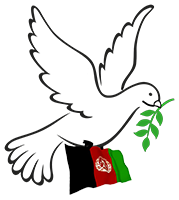Written by Rishika Singh
Indian Express
May 4, 2025
The Bagram Airflied was built in the 1950s by the USSR. It has played a central role in the Soviet-Afghan War (1979-89) as well as the American misadventure in Afghanistan (2001-21). Today it is under the control of the Taliban.
US President Donald Trump on Thursday claimed that China now occupies the Bagram Airfield, which American forces had vacated weeks before pulling out from Afghanistan in 2021.
Trump claimed that the Americans were going to “keep” Bagram which is “an hour away from where China makes its nuclear weapons”. But “they (presumably the Joe Biden administration) gave Bagram up, and right now, China occupies Bagram,” he said.
It is unclear which Chinese nuclear facility Trump was referring to. The closest known testing site is 2,000 km away at Lop Nur in Xinjiang, where China tested its first atom bomb in 1964. The closest nuclear weapons facility is the Koko Nur complex, further east in the Qinghai province.
When Trump made similar comments in March, the Taliban had issued a strong denial. “Bagram is controlled by the Islamic Emirate (Taliban), not China. Chinese troops are not present here, nor do we have any such pact with any country,” it had said.
The air base was originally built by the Soviets in the 1950s, during the early days of the Cold War, when both the US and the USSR were jockeying for influence in Afghanistan. In 1959, for his landmark visit to the country, then US President Dwight Eisenhower landed in Bagram.
During the Soviet-Afghan War from 1979-89, Bagram became a vital Soviet base. Troops from airborne divisions were deployed from Bagram, and Sukhoi Su-25s flew daily missions against mujahideen in the mountains from the base. The base was fortified, and began housing military personnel.
Expanded by US
After the Soviet withdrawal, in the 1990s, the abandoned Bagram base became a frontline in a war between the Taliban, who held Kabul to the south, and the Northern Alliance fighters based in mountain gorges to its north. The airbase was heavily damaged as a result.
After the September 11, 2001 attacks, the US and its allies took over the Bagram Airfield. Over the next two decades, as the “War on Terror” raged on, Bagram became the epicentre of the American presence in Afghanistan.
The base was further expanded — it grew to over 77 sq km — and a new, improved runway, almost 3.5 km-long, was constructed, as were medical facilities and fast food joints for US personnel.
A disused hangar also ended up being used as a detention facility, which has drawn comparisons to Guantanamo Bay base in Cuba due to reports of torture and abuse by US soldiers.
American exit, Chinese stakes
The previous Trump administration in 2020 signed a deal with the Taliban, which provided for a pullout of all NATO troops from Afghanistan soil.
Over the next year, the Taliban gained ground as the US began pulling resources from Afghanistan. The final American aircraft took off from the Kabul airport on August 30, 2021. US forces had vacated Bagram on July 2; the base fell to the Taliban on August 15.
With little domestic support for keeping troops in Afghanistan, keeping the Bagram Airfield was never on the cards. “Retaining Bagram would have required putting as many as 5,000 US troops in harm’s way just to operate and defend it,” then Defence Secretary Lloyd Austin told the House Armed Services Committee in September 2021.
The base is under Taliban control today. That said, the US has long been concerned over China making inroads into Afghanistan after its exit. Even as most countries have been wary of fully engaging with the Taliban, China gave the Taliban representative in Beijing ambassador credentials last year.
For China, relations with Afghanistan matter because it has a sizable Muslim population of its own in the bordering Xinjiang. Beijing would want to ensure that radical elements in Afghanistan do not cross over into its own territory. To that end, it has attempted to bolster ties within a limited framework and also made some investments in Afghanistan.
Rishika Singh is a Senior sub-editor at the Explained Desk of The Indian Express. She enjoys writing on issues related to international relations, and in particular, likes to follow analyses of news from China. Additionally, she writes on developments related to politics and culture in India.
 Afghanistan Peace Campaign
Afghanistan Peace Campaign